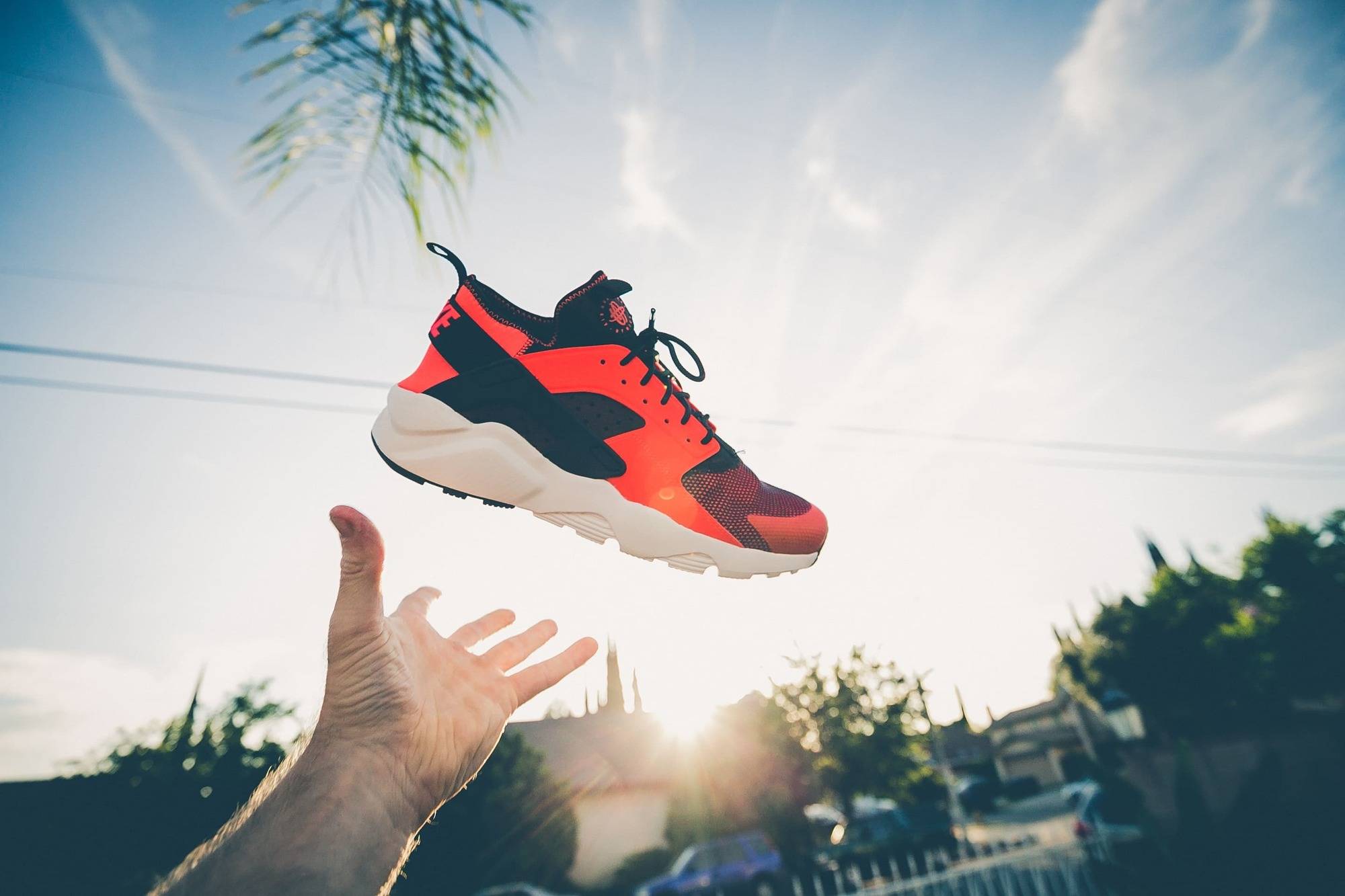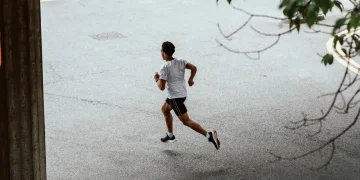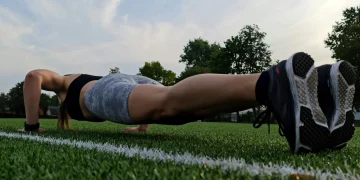Running shoes have been a staple of sports marketing for as long as sports marketing was a thing. You can see shoe ads by all your favorite celebrities: LeBron James, Michael Jordan, The Rock, Kevin Hart, Donald Glover, Cardi B, Serena Williams, Kendrick Lamar, Travis Scott, and anyone in between.
But how does one find the right running shoes? Find out now in our convenient running shoe guide.
Why Buy Running Shoes?
If you are only beginning to run, you might be wondering, “Do I need to get running shoes?” And many runners will respond with a resounding “Duh!”
And while the question is answered, the curiosity remains—why?
Dr. Michael Scarcella, MD, of the Cleveland Clinic, has noted: “Running shoes are the only protective equipment runners have to safeguard themselves from injury, so choosing the correct running shoe is important.”
While the human body is famous for its endurance among other species of the animal kingdom, it is far from invincible. Running barefoot or wearing minimal legwear on concrete and pavement is possible but not sustainable in the long run (see what we did there?).
Running barefoot on the beach or grass seems perfectly fine, although research is limited for now.
The point is that a first-timer’s runner’s shoes can be any sports shoes just to get into running. It is more important to work on the technique before worrying about accessories.
However, if you feel like running is your jam, and you are going to dedicate a lot of time to it, properly fitting running shoes will significantly improve your experience. They will cushion the midsole area of your foot from the impact of the foot to the ground, provide support for your arches, and reduce stress on the ankles, heels, and toes. This results in reduced back, hip, and knee pain and reduced risk of tendonitis, joint pain, stress fractures, and other injuries.
How to Choose Running Shoes
So, you have made the grand decision to purchase yourself a brand-new pair of cool kicks. You are giddy with excitement, and now only one problem remains to be solved—how to buy running shoes. To help you with that, we have prepared some questions for you to answer before choosing your running shoes.
What Surfaces Are You Running On?
- Pavements. If you run mostly on pavement and concrete, choose road shoes. They offer more cushioning for additional shock absorption, minimizing the risk of injury.
- Muddy trails and grass. Choose trail shoes if you are mostly running through untamed wilds. These typically have deeper tread and better grip and ankle support.
- Even mix. If your training sessions have a healthy helping of both pavements and trails, you will be better off with a pair of hybrid running shoes. They offer a nice mix of grip and cushioning that will feel equally comfortable regardless of the surface.
What is Your Running Distance?
- Long distances. If you are going for half marathons and more, we recommend going for more cushioned shoes. Having good long-distance running shoes will offer the most comfort during the run.
- Short distances. For shorter distances, especially sprints, it is best to get more flexible shoes. These will allow for better foot movement, giving you the slightest edge over other runners.
What is Your Gait Type?
- Overpronation. If you are a severe overpronator, you might want to get motion-control shoes. This type of running shoe is made to control excessive rolling of the foot, correct your gait, and provide additional shock absorption. Motion control shoes are usually the most rigid. If your overpronation is only mild, stability shoes will also be a great choice for you, being slightly more rigid than your standard running shoes but still having that nice cushion for comfortable long runs.
- Underpronation. If you are an underpronator, consider getting cushioned running shoes. The rolling motion helps your foot absorb the shock of every step that would otherwise be sent through your joints toward your spine.
- Neutral. For neutral pronators, it is advised to use lightweight or trail running shoes. But you can also get cushioned shoes as well.
If you do not know your gait type, you can visit one of your specialized shoe stores, and they will help you find out. You can also assume your pronation by knowing how high your arch is. People with high arches are more likely to underpronate, while those with low arches or flat feet are likelier to overpronate.
A Special Note on Specialized Stores
Whatever your running needs and experience, we highly recommend going to a specialized store for a proper running shoe fitting. You can read a thousand articles on picking the right running shoes, but it is all theory.
You will likely need to go to a store and try on a few pairs live to get a nice fitting shoe. Of course, you can always opt for purchasing online, but it is always a gamble with shoes. You might get lucky one time, but it does not mean you will always get what you require from an online store.
Specialists at a physical store know precisely how to pick a good running shoe for long distances, short sprints, or a mix of both. They will analyze your running style and help you identify running shoes suitable for you.
More Tips for Picking the Best Running Shoes
Choosing the best running shoes is a science and is highly individual. However, we have some more general tips for choosing running shoes.
Tip #1. Take Your Socks and Insoles to the Fitting
It might seem obvious, but many runners ignore this point when shopping for new sneakers.
If you wear insoles, bring them to the fitting to know exactly how the shoe will feel in a real run. Never tried insoles? Consider buying them now. Insoles will help you customize the fit of your shoe for more comfort and stability.
The same goes for socks. Bring the ones you will be wearing for your runs. It may sound silly, but a good pair of socks can be the difference between beating your PB and succumbing to the pain of horrible blisters at the nearest aid station.
Tip #2. Brands Matter but not for the Reason They Want you to Think
If somebody says wearing brand shoes will make you run faster—reconsider talking with that person. However, brand shoes do matter because different brands will have different fits.
A Nike size 8 shoe will fit vastly different from a New Balance 8 or an Adidas 8.
However, it does not mean that you have to choose one brand and stick to it for the rest of your life. Brands change, and so do your feet.
Nevertheless, picking shoes for running from a known brand will guarantee their quality, unless you get some cheap knock-offs. But do not sleep on lesser-known brands—these can offer the same or better quality at lower prices.
Tip #3. Pick for Function, not Fashion
We get it. Sometimes you just want those black Pumas because they go so well with your shorts. But before you commit to a purchase, take a moment to consider the function of the shoes. Do they fit your running needs? Are they made of high-quality materials? Are they even running shoes? If the answer to all of those is “yes,” let loose your fashion guru.
Tip #4. Ask for Deals
You probably did not expect to see haggling tips in this article, yet here we are. When at checkout, ask if there are any deals on the shoes you are choosing.
If you are a member of a local track club, you might get a discount from a specialized store. Moreover, the employee might lift the figurative curtains of the shop for you and let you in on a secret—maybe a deal is coming in a few days. You would miss out if you did not ask. But you did, and we are proud of you for this.
Tip #5. Buy Bigger Shoes
Many runners tend to buy tight-fitting shoes. It feels nice in the beginning but will lead to blisters and black toenails over significant distances. This is especially prevalent in people who are more self-conscious about their feet size.
The perfect fit allows all your toes to wiggle freely, leaving about an inch in the forefoot. But do not go overboard—you do not want to drown in them.
Tip #6. Shop in the Evening
For some people, the body swells and gets slightly larger over the course of a day. This includes the feet. The swelling peaks may be at 4–5 p.m., so that is prime time for buying shoes. Otherwise, you risk running in shoes that are too small for your swollen feet.
Tip #7. Measure Your Feet
As mentioned before, the same sizes of different brands will fit differently. The best way to facilitate the picking process is knowing how big your feetsies are. That way, an employer at a specialized store will be able to find a suitable pair for you much faster.
Remember that your feet change as you age, so getting the same shoes every time might not be the solution. We recommend remeasuring often.
Conclusion
As you can see, running shoes are an amazing supplement for any runner. However, choosing the right shoes for yourself is a challenging endeavor, especially if you do it yourself. We hope our tips have helped you.






